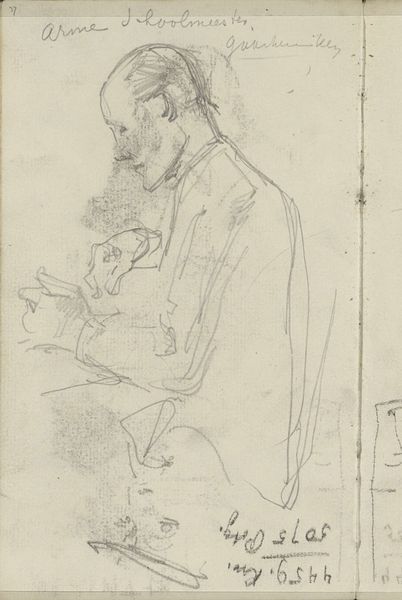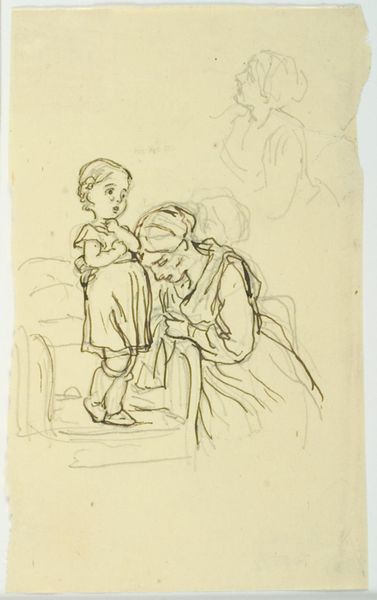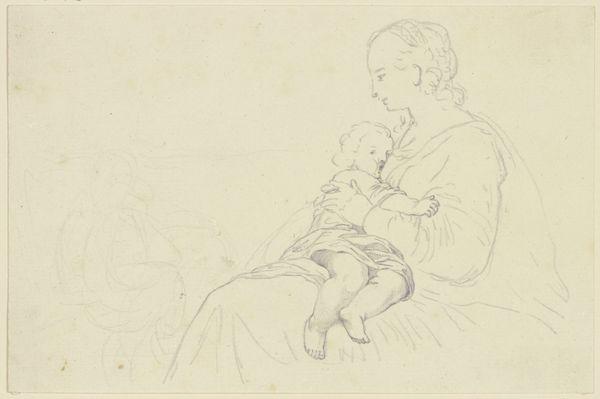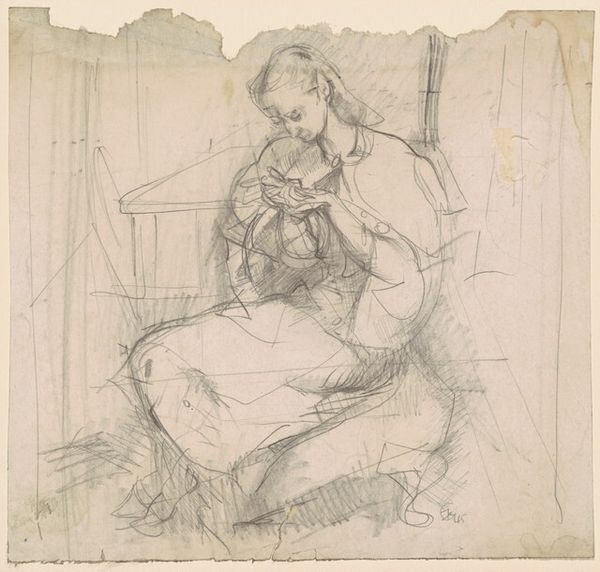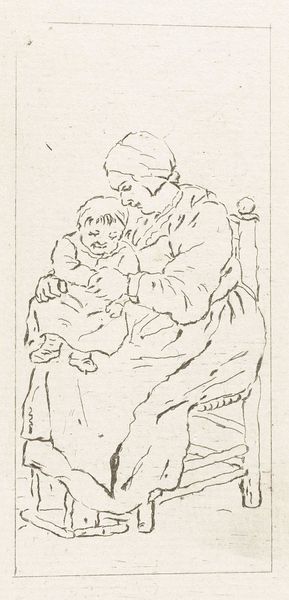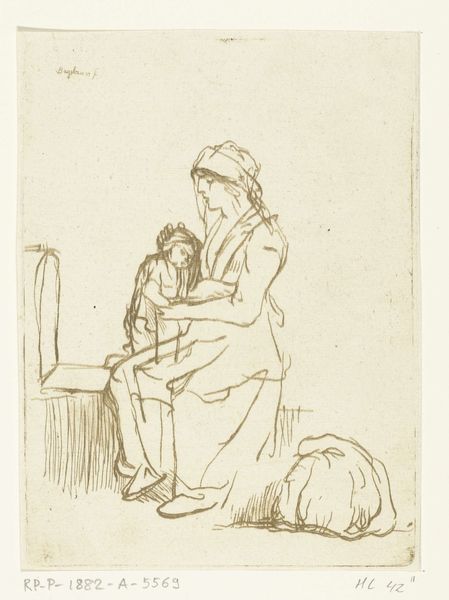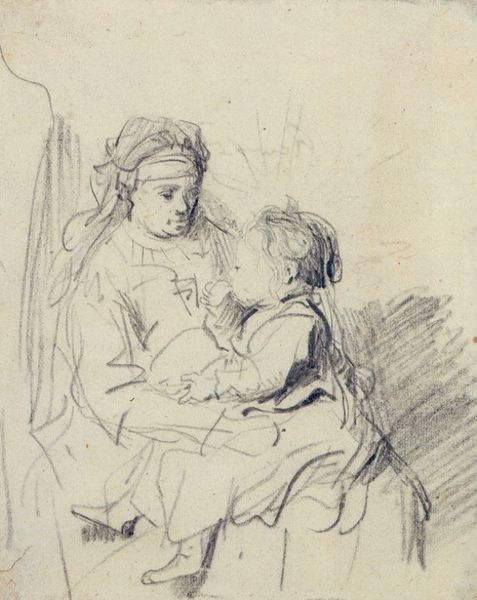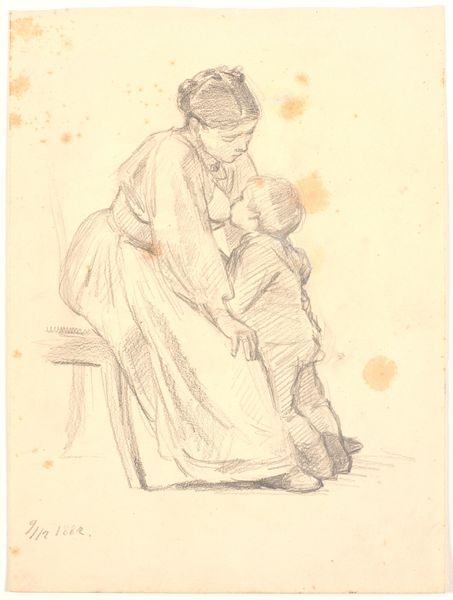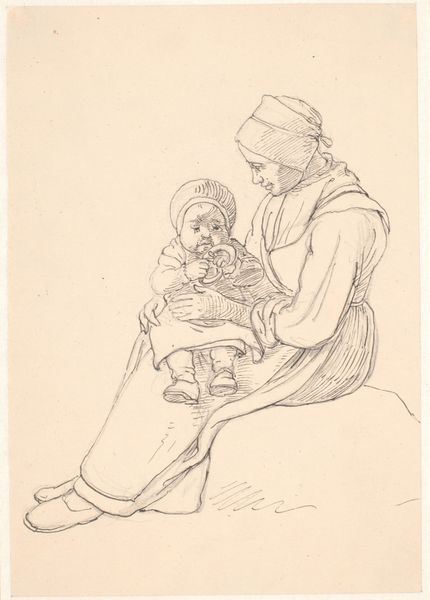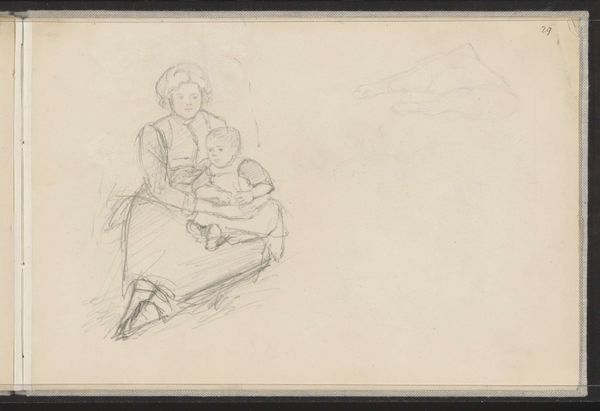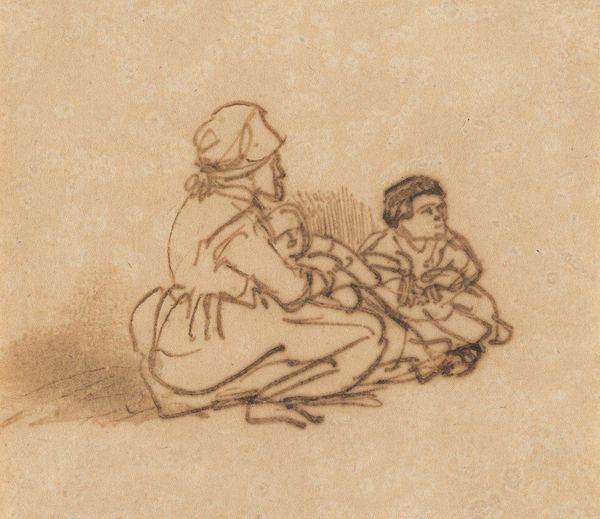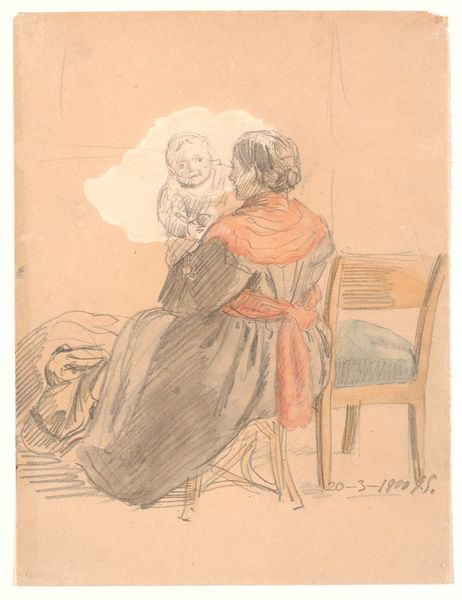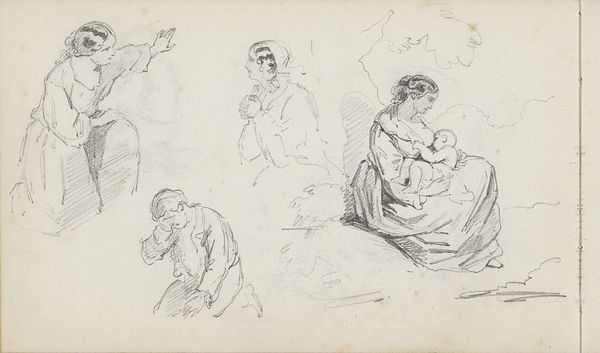
drawing
#
portrait
#
drawing
#
romanticism
#
portrait drawing
#
genre-painting
#
realism
Copyright: Public Domain: Artvee
Curator: Here we have a drawing titled "The Grandmother" by Honoré Daumier. Its raw, sketchy lines immediately convey tenderness. Editor: Yes, there's something quite affecting about the stark composition. The way the light seems to catch only the grandmother's face, drawing your eye up to her gaze... it’s almost ethereal in its effect. Curator: Daumier was known for his social commentary, so I think it’s worth exploring what this image represents within the broader context of 19th-century French society. Images of grandmothers at that time reflected societal shifts in how aging was perceived. It could reflect the changing dynamics of family structure due to industrialization and urbanization. Editor: True, but also the way the drawing is executed emphasizes formal relationships. Notice the contrast between the wrinkled skin of the grandmother and the smoothness of the baby’s skin; the tension created by the different shapes and densities, is remarkable. Curator: Absolutely. Consider this drawing alongside depictions of maternity from the same period. Are we seeing an idealized vision of familial bonds, or perhaps a commentary on the shifting roles of women in different stages of life, caught between generational responsibilities? The image hints at a complicated dynamic. We also cannot deny the way the generational roles interact with societal expectations placed on women across a lifetime. Editor: While that reading is relevant, I think the real impact of this work lies in Daumier’s technique. The economy of line, the use of shading to suggest volume... all these contribute to the work's inherent expressiveness. There's something universal about that quiet intimacy that transcends a specific time period or political argument. Curator: Perhaps. Ultimately, Daumier offers us an intimate window into not just one family's life but asks us to confront broader historical and societal norms concerning aging, women, and family. Editor: And I maintain that the piece succeeds foremost through its effective, albeit simplistic, construction of emotive line and suggestive composition. It’s this foundation of formal consideration that invites such questions.
Comments
No comments
Be the first to comment and join the conversation on the ultimate creative platform.
